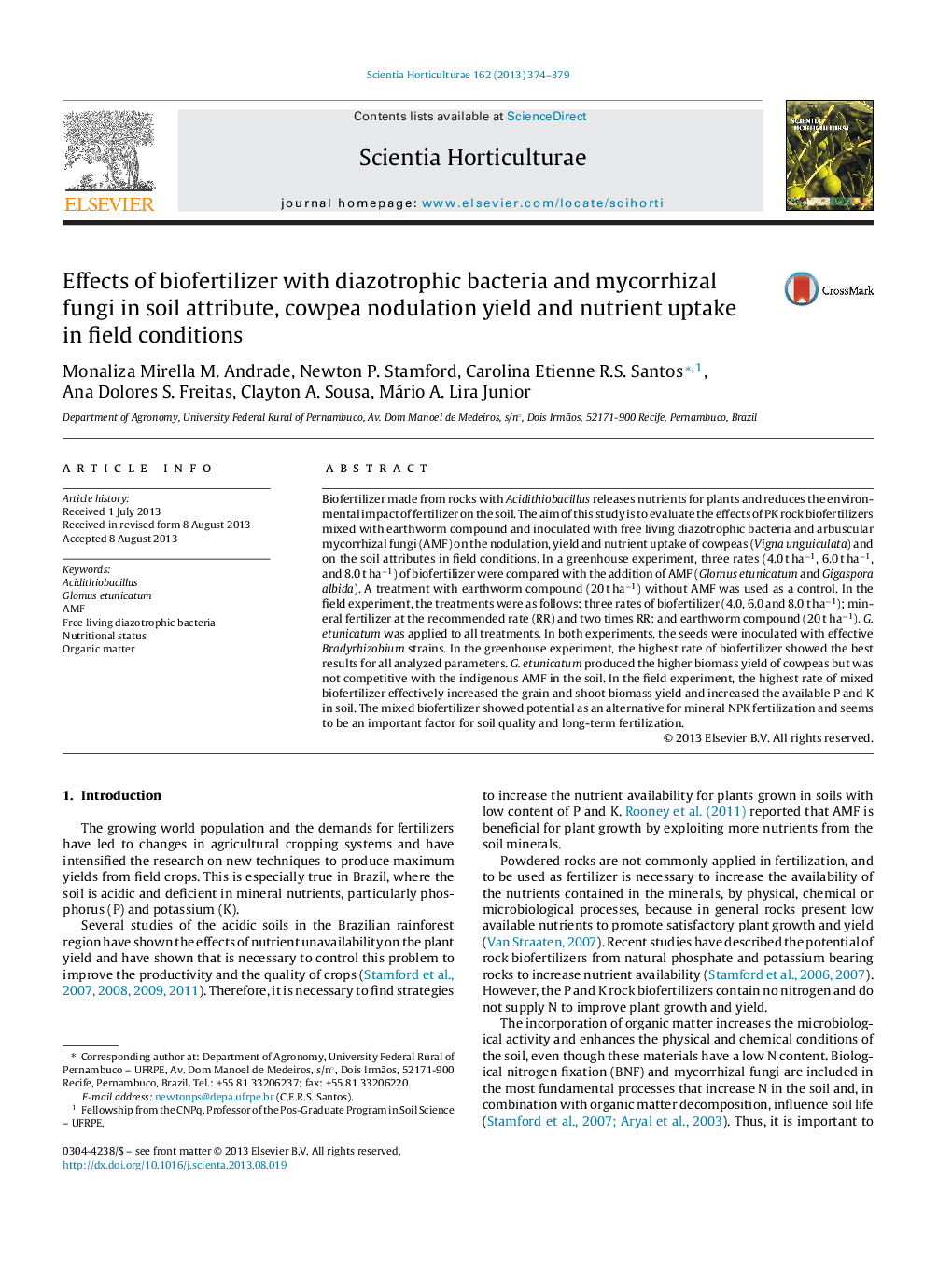| Article ID | Journal | Published Year | Pages | File Type |
|---|---|---|---|---|
| 6407362 | Scientia Horticulturae | 2013 | 6 Pages |
â¢The biofertilizer was enriched in N directly by the introduction of selected free living diazotrophic bacteria and mycorrhizal fungi.â¢A modern and economic biofertilizer was modeled to increase plant growth and nutrient uptake.â¢The new agricultural income increases soil quality using organic compound mixed with PK rocks.â¢Biofertilizer with free living diazotrophic bacteria has potential as alternative to mineral fertilizers.
Biofertilizer made from rocks with Acidithiobacillus releases nutrients for plants and reduces the environmental impact of fertilizer on the soil. The aim of this study is to evaluate the effects of PK rock biofertilizers mixed with earthworm compound and inoculated with free living diazotrophic bacteria and arbuscular mycorrhizal fungi (AMF) on the nodulation, yield and nutrient uptake of cowpeas (Vigna unguiculata) and on the soil attributes in field conditions. In a greenhouse experiment, three rates (4.0 t haâ1, 6.0 t haâ1, and 8.0 t haâ1) of biofertilizer were compared with the addition of AMF (Glomus etunicatum and Gigaspora albida). A treatment with earthworm compound (20 t haâ1) without AMF was used as a control. In the field experiment, the treatments were as follows: three rates of biofertilizer (4.0, 6.0 and 8.0 t haâ1); mineral fertilizer at the recommended rate (RR) and two times RR; and earthworm compound (20 t haâ1). G. etunicatum was applied to all treatments. In both experiments, the seeds were inoculated with effective Bradyrhizobium strains. In the greenhouse experiment, the highest rate of biofertilizer showed the best results for all analyzed parameters. G. etunicatum produced the higher biomass yield of cowpeas but was not competitive with the indigenous AMF in the soil. In the field experiment, the highest rate of mixed biofertilizer effectively increased the grain and shoot biomass yield and increased the available P and K in soil. The mixed biofertilizer showed potential as an alternative for mineral NPK fertilization and seems to be an important factor for soil quality and long-term fertilization.
